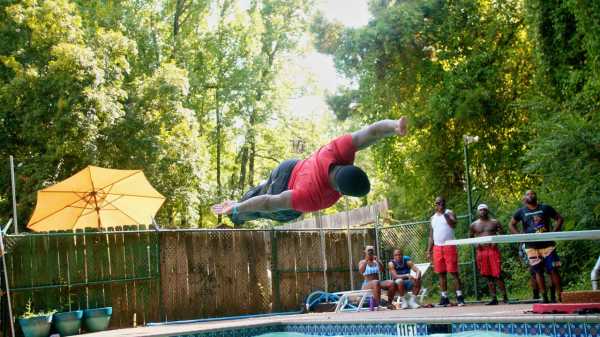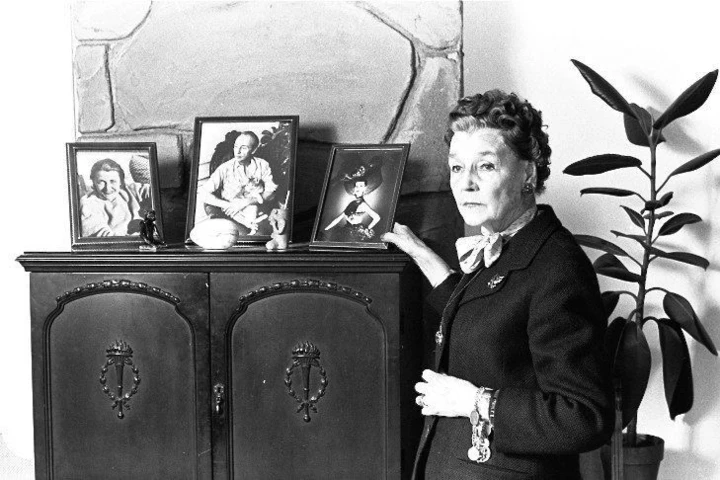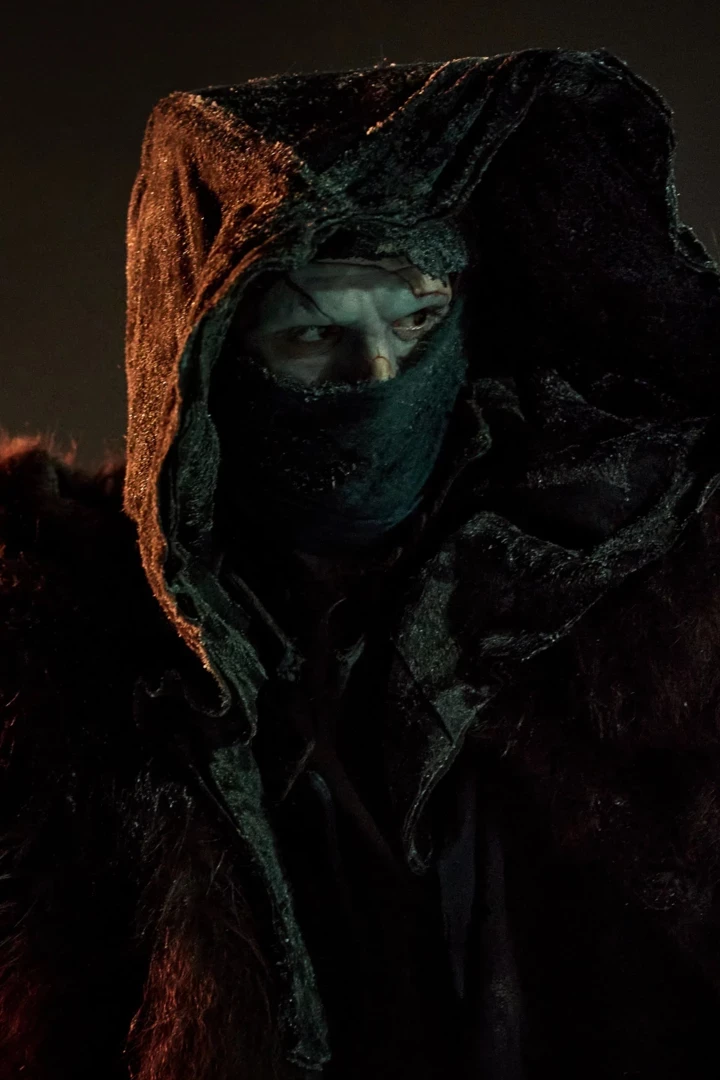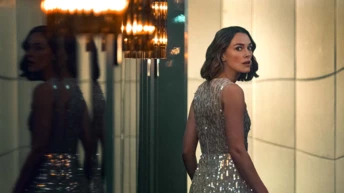
Save this storySave this storySave this storySave this story
Watch “Slice.”
For Zaire Love, a filmmaker who was born and raised in Memphis, slicing was always a part of summer. “I grew up watching it. I just didn’t know that that’s what it was called,” she told me. Slicing is an elaborate diving technique that involves cutting the water with one’s side, causing a huge splash. And for Black men in Memphis it’s a culture and an art form. Derrico (Rico) Golden, a “pro slicer,” opens Love’s documentary “Slice.” He stands, dripping wet, in front of the Lorraine Motel, where Martin Luther King, Jr., was assassinated in 1968. Rico wears a suit and the sun shines on his face such that his skin looks like a shade of highlighter melanin. Slicing “is an art that come from homegrown Memphis,” he says.
Love grew up in a neighborhood called Orange Mound. “Some people contest it, but it is the first Black neighborhood for and by Black people in America,” she said. “That’s the legacy. There’s a whole lot of pride.” She Zoomed from her mother’s home in the neighborhood, wearing a baseball cap that said “Playah,” in cursive, and a green-and-white polo. The golden rings on her fingers matched the empty picture frames sitting on the fireplace mantle behind her. For Rico and his homeboys, slicing is more than a summertime flex. Pools become community hubs that celebrate Black-boy joy. “We still are standing on our ancestors’ shoulders—the folks who made this possible,” Love said.
The New Yorker Documentary
View the latest or submit your own film.

Slicing involves intricate choreography. “The swag, the gather-up before you hit the pool, makes the slice that much better,” Rico, who narrates the film, says. His homies Keith (Sip) Reynolds and Michael Hennaghen are captured doing “pretty-boy slices,” complex tricks that exude flyness. Sip jumps over one of his friends before smacking the pool; Mike jackknifes off the diving board before contorting his body into a straight line. Both of them help tell the story about slicing’s origins and staying power. “Come off the board and try to do the exact same thing I do,” says Mike, who taught Rico how to slice when Rico was around twelve years old. Two decades later, Rico shows young Memphians what it takes to be a pro slicer. “It gotta be in ya, not on ya,” Rico says. “You can buy all the drip, but you can’t buy swag, though.”
Swimming pools have a complex racial history in America. When community pools were being constructed in the nineteenth and twentieth centuries, city planners often overlooked African American enclaves. During Jim Crow, town pools were segregated, and Black folks were often shunted to small indoor swimming pools, if they were allowed in at all. It’s miraculous that slicing became a form of expression for Memphians. “You can get somebody out the Olympics and I guarantee they can’t do what we do,” Rico says.
It might not be legal to jump the fence around a gated community and hit the pool, but it’s a necessity. Escaping security “puts you at another level of slicing,” Sip says. The movement can be interpreted as protest art, but Mike, Sip, and Rico believe they are just smacking the pool.
The American South has a dark, complicated reputation as it pertains to the horrors of enslavement and Jim Crow, which Love said has pushed some people to mask parts of their lineage, to code-switch. “Don’t talk too much like that. Don’t do that,” Love said, listing examples of corrections she’s received from her kinfolk. When she hears these calls for assimilation, she interprets them as subversive attempts to erase Black Southern culture. “You were birthed from this. If not this, you couldn’t be that,” she said, referring to the region as “our motherland,” from which many Black Americans migrated north and west, seeking opportunity and safer communities above the Mason-Dixon Line. Love’s intention with “Slice” was to immortalize Black-boy joy, which in and of itself is a form of resistance. Her documentary is full of Black men laughing and leaping at casual pool parties, showing off, and gassing one another up. It runs counter to the caricatures of Black men perpetuated by the media. “It’s Black men just having a good time. . . . You could just see it in their eyes, like, they’re not worried about any of the stresses of the world,” Love said. “They just, like, ‘Dang, fool hit that thang, hit that junt.’ ”
Sourse: newyorker.com







